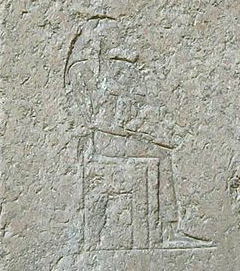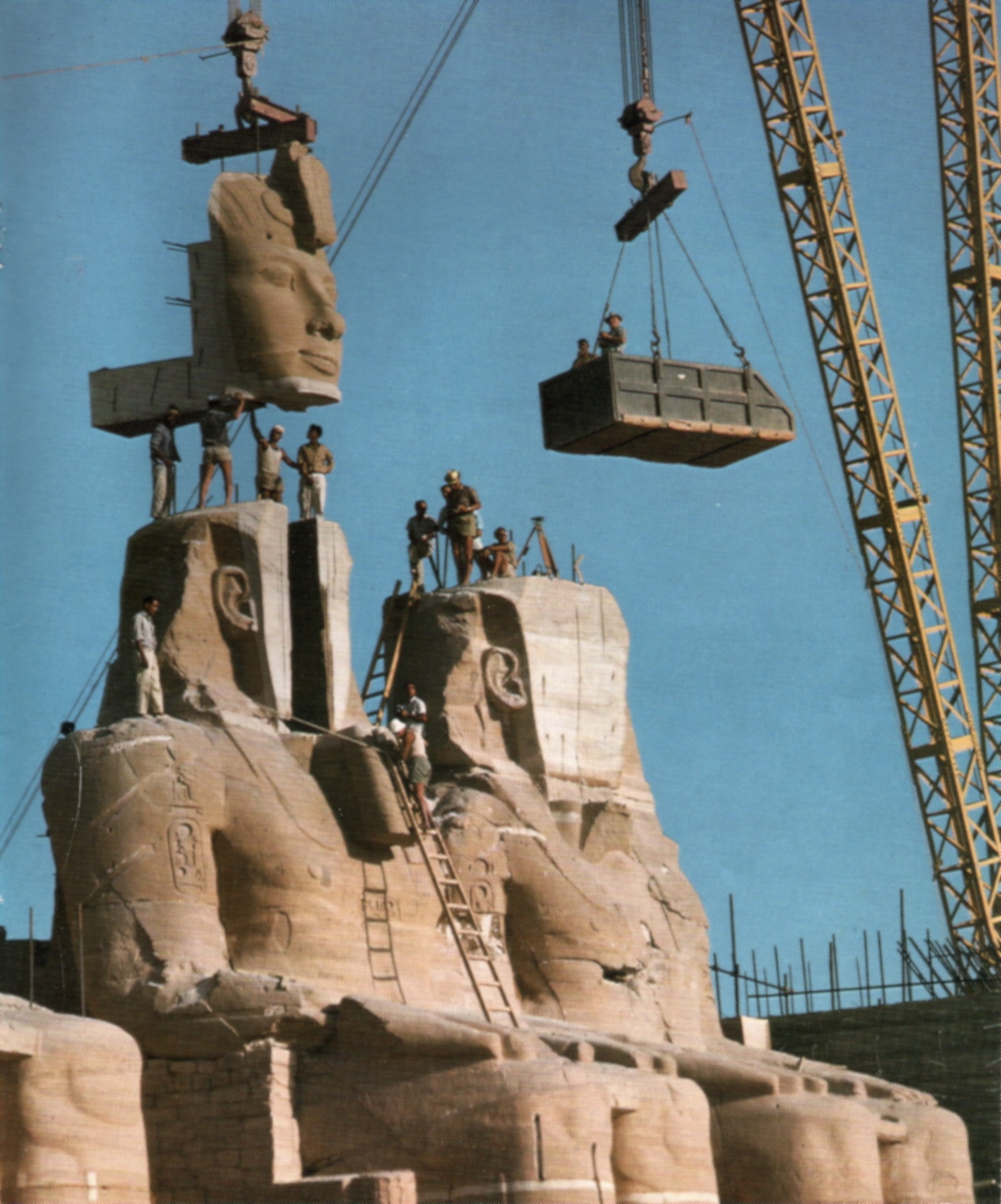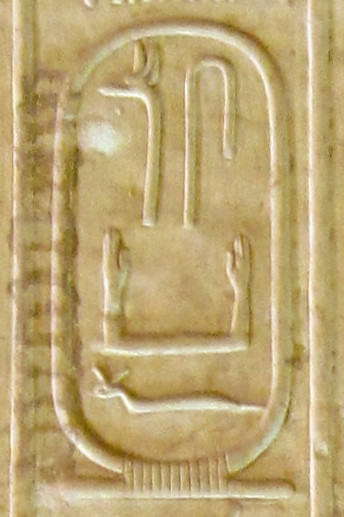|
Sun Temple
A sun temple (or solar temple) is a building used for religious or spiritual activities, such as prayer and sacrifice, dedicated to the sun or a solar deity. Such temples were built by a number different cultures and are distributed around the world including in India, China, Egypt, Japan and Peru. Some of the temples are in ruins, undergoing excavation, preservation or restoration and a few are listed as World Heritage Sites individually or as part of a larger site, such as Konark. China The Temple of the Sun in Beijing, China, was built in 1530 during the Ming dynasty by the Jiajing Emperor, together with new temples dedicated to the Earth and the Moon, and an expansion of the Temple of Heaven. The Temple of the Sun was used by the imperial court for elaborate acts of worship involving fasting, prayers, dancing and animal sacrifices, as part of a year-long cycle of ceremonies involving all the temples. An important element was the colour red, which was associated with th ... [...More Info...] [...Related Items...] OR: [Wikipedia] [Google] [Baidu] |
Jiajing Emperor
The Jiajing Emperor (16September 150723January 1567), also known by his temple name as the Emperor Shizong of Ming, personal name Zhu Houcong, art name, art names Yaozhai, Leixuan, and Tianchi Diaosou, was the 12th List of emperors of the Ming dynasty, emperor of the Ming dynasty, reigning from 1521 to 1567. He succeeded his cousin, the Zhengde Emperor. The Jiajing Emperor was born as a cousin of the reigning Zhengde Emperor, so his accession to the throne was unexpected, but when the Zhengde Emperor died without an heir, the government, led by Senior Grand Secretary Yang Tinghe and Empress Zhang (Hongzhi), Empress Dowager Zhang, chose him as the new ruler. After his enthronement, a dispute arose between the emperor and his officials regarding the method of legalizing his accession. This conflict, known as the Great Rites Controversy, was a significant political issue at the beginning of his reign. After three years, the emperor emerged victorious, with his main opponents eithe ... [...More Info...] [...Related Items...] OR: [Wikipedia] [Google] [Baidu] |
Martand Sun Temple
The Martand Sun Temple is a Hindu temple located near the city of Anantnag in the Kashmir Valley of Jammu and Kashmir (union territory), India. It dates back to the eighth century CE and was dedicated to Surya, the solar deity in Hinduism; Surya is also known by the Sanskrit-language synonym '' Martand'' (). The temple was destroyed by Sikandar Shah Miri. History Establishment According to Kalhana, the Martand Sun Temple was commissioned by Lalitaditya Muktapida in the eighth century CE. Destruction According to Jonaraja (fl. 1430) as well as Hasan Ali, the temple was destroyed by Sikandar Shah Miri (1389-1413) in a zeal to Islamise society under the advice of Sufi preacher Mir Muhammad Hamadani; Jonaraja pinned the blame on his chief-counsel Suhabhatta, a Brahman neo-convert who was held to have manifested a reign of intense persecution for the local Hindus, whereas Ali particularly affirmed Sikandar's convictions in these aspects. Scholars caution against accepting t ... [...More Info...] [...Related Items...] OR: [Wikipedia] [Google] [Baidu] |
Indian Subcontinent
The Indian subcontinent is a physiographic region of Asia below the Himalayas which projects into the Indian Ocean between the Bay of Bengal to the east and the Arabian Sea to the west. It is now divided between Bangladesh, India, and Pakistan. (subscription required) Although the terms "Indian subcontinent" and "South Asia" are often also used interchangeably to denote a wider region which includes, in addition, Bhutan, the Maldives, Nepal and Sri Lanka, the "Indian subcontinent" is more of a geophysical term, whereas "South Asia" is more geopolitical. "South Asia" frequently also includes Afghanistan, which is not considered part of the subcontinent even in extended usage.Jim Norwine & Alfonso González, ''The Third World: states of mind and being'', pages 209, Taylor & Francis, 1988, Quote: ""The term "South Asia" also signifies the Indian Subcontinent""Raj S. Bhopal, ''Ethnicity, race, and health in multicultural societies'', pages 33, Oxford University Press, 2007, ; Q ... [...More Info...] [...Related Items...] OR: [Wikipedia] [Google] [Baidu] |
Surya
Surya ( ; , ) is the Sun#Dalal, Dalal, p. 399 as well as the solar deity in Hinduism. He is traditionally one of the major five deities in the Smarta tradition, Smarta tradition, all of whom are considered as equivalent deities in the Panchayatana puja and a means to realise Brahman. Other names of Surya in ancient Indian literature include Āditya, Arka, Bhānu, Savitṛ, Pūṣan, Ravi, Mārtāṇḍa, Mitra, Bhāskara, Prabhākara, Kathiravan, and Vivasvat.#Dalal, Dalal, pp. 5, 311 The iconography of Surya is often depicted riding a chariot harnessed by horses, often seven in number which represent the seven colours of visible light, and the seven days of the week. During the medieval period, Surya was worshipped in tandem with Brahma during the day, Shiva at noon, and Vishnu in the evening. In some ancient texts and art, Surya is presented syncretically with Indra, Ganesha, and others. Surya as a deity is also found in the arts and literature of Buddhism and Jainism. Surya ... [...More Info...] [...Related Items...] OR: [Wikipedia] [Google] [Baidu] |
Ramesses II
Ramesses II (sometimes written Ramses or Rameses) (; , , ; ), commonly known as Ramesses the Great, was an Pharaoh, Egyptian pharaoh. He was the third ruler of the Nineteenth Dynasty of Egypt, Nineteenth Dynasty. Along with Thutmose III of the Eighteenth Dynasty of Egypt, Eighteenth Dynasty, he is often regarded as the greatest, most celebrated, and most powerful pharaoh of the New Kingdom of Egypt, New Kingdom, which itself was the most powerful period of ancient Egypt. He is also widely considered one of ancient Egypt's most successful warrior pharaohs, conducting no fewer than 15 military campaigns, all resulting in victories, excluding the Battle of Kadesh, generally considered a stalemate. In Ancient Greek literature, ancient Greek sources, he is called Ozymandias, derived from the first part of his Egyptian-language regnal name: . Ramesses was also referred to as the "Great Ancestor" by successor pharaohs and the Egyptian people. For the early part of his reign, he focu ... [...More Info...] [...Related Items...] OR: [Wikipedia] [Google] [Baidu] |
Niuserre
Nyuserre Ini (also Niuserre Ini or Neuserre Ini; in Greek known as Rathurês, ''Ῥαθούρης''; died 2422 BC) was an Ancient Egyptian king King is a royal title given to a male monarch. A king is an Absolute monarchy, absolute monarch if he holds unrestricted Government, governmental power or exercises full sovereignty over a nation. Conversely, he is a Constitutional monarchy, ..., the sixth ruler of the Fifth Dynasty during the Old Kingdom period. He is credited with a reign of 24 to 36 years depending on the scholar, and likely lived in the second half of the 25th century BCE. Nyuserre was the younger son of Neferirkare Kakai and queen Khentkaus II, and the brother of the short-lived king Neferefre. He may have succeeded his brother directly, as indicated by much later historical sources. Alternatively, Shepseskare may have reigned between the two as advocated by Miroslav Verner, albeit only for a few weeks or months at the most. The relation of Shepseskare with ... [...More Info...] [...Related Items...] OR: [Wikipedia] [Google] [Baidu] |
Userkaf
Userkaf (known in Ancient Greek as , ; died 2491 BC) was a pharaoh, king of ancient Egypt and the founder of the Fifth Dynasty of Egypt, Fifth Dynasty. He reigned for around seven years in the early 25th century BC, during the Old Kingdom of Egypt, Old Kingdom period. He probably belonged to a branch of the Fourth Dynasty of Egypt, Fourth Dynasty royal family, although his parentage is uncertain; he could have been the son of Khentkaus I. He had at least one daughter. Sahure, who succeeded him as king, was probably his son with his consort Neferhetepes (wife of Userkaf), Neferhetepes. A tomb belonging to another possible son, Waser-If-Re, has been discovered in Saqqara. His reign heralded the ascendancy of the cult of Ra, who effectively became Egypt's state god during the Fifth Dynasty. Userkaf may have been a high-priest of Ra before ascending the throne, and built a Egyptian sun temple, sun temple, known as the ''Sun temple of Userkaf, Nekhenre'', between Abusir and Abu Gurab. ... [...More Info...] [...Related Items...] OR: [Wikipedia] [Google] [Baidu] |
Abu Simbel Temples
Abu Simbel is a historic site comprising two massive rock-cut temples in the village of Abu Simbel (), Aswan Governorate, Upper Egypt, near the border with Sudan. It is located on the western bank of Lake Nasser, about southwest of Aswan (about by road). The twin temples were originally carved out of the mountainside in the 13th century BC, during the 19th Dynasty reign of the Pharaoh Ramesses II. Their huge external rock relief figures of Ramesses II have become iconic. His wife, Nefertari, and children can be seen in smaller figures by his feet. Sculptures inside the Great Temple commemorate Ramesses II's heroic leadership at the Battle of Kadesh. The complex was relocated in its entirety in 1968 to higher ground to avoid it being submerged by Lake Nasser, the Aswan Dam reservoir. As part of International Campaign to Save the Monuments of Nubia, an artificial hill was made from a domed structure to house the Abu Simbel Temples, under the supervision of a Polish ... [...More Info...] [...Related Items...] OR: [Wikipedia] [Google] [Baidu] |
Ancient Egypt
Ancient Egypt () was a cradle of civilization concentrated along the lower reaches of the Nile River in Northeast Africa. It emerged from prehistoric Egypt around 3150BC (according to conventional Egyptian chronology), when Upper and Lower Egypt were amalgamated by Menes, who is believed by the majority of List of Egyptologists, Egyptologists to have been the same person as Narmer. The history of ancient Egypt unfolded as a series of stable kingdoms interspersed by the "Periodization of ancient Egypt, Intermediate Periods" of relative instability. These stable kingdoms existed in one of three periods: the Old Kingdom of Egypt, Old Kingdom of the Early Bronze Age; the Middle Kingdom of Egypt, Middle Kingdom of the Middle Bronze Age; or the New Kingdom of Egypt, New Kingdom of the Late Bronze Age. The pinnacle of ancient Egyptian power was achieved during the New Kingdom, which extended its rule to much of Nubia and a considerable portion of the Levant. After this period, Egypt ... [...More Info...] [...Related Items...] OR: [Wikipedia] [Google] [Baidu] |
Userkaf SolarTemple And ValleyTemple Abusir
Userkaf (known in Ancient Greek as , ; died 2491 BC) was a pharaoh, king of ancient Egypt and the founder of the Fifth Dynasty of Egypt, Fifth Dynasty. He reigned for around seven years in the early 25th century BC, during the Old Kingdom of Egypt, Old Kingdom period. He probably belonged to a branch of the Fourth Dynasty of Egypt, Fourth Dynasty royal family, although his parentage is uncertain; he could have been the son of Khentkaus I. He had at least one daughter. Sahure, who succeeded him as king, was probably his son with his consort Neferhetepes (wife of Userkaf), Neferhetepes. A tomb belonging to another possible son, Waser-If-Re, has been discovered in Saqqara. His reign heralded the ascendancy of the cult of Ra, who effectively became Egypt's state god during the Fifth Dynasty. Userkaf may have been a high-priest of Ra before ascending the throne, and built a Egyptian sun temple, sun temple, known as the ''Sun temple of Userkaf, Nekhenre'', between Abusir and Abu Gurab. ... [...More Info...] [...Related Items...] OR: [Wikipedia] [Google] [Baidu] |








